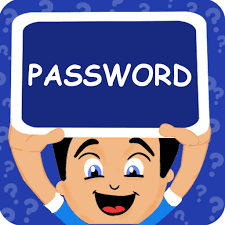The Password Game is a beloved word-guessing game that has entertained friends and families for generations. Known for its simple rules and engaging gameplay, it challenges players’ vocabulary, creativity, and communication skills. This article explores the history of the game, how it’s played, and tips for making your game nights even more enjoyable.
History of the Password Game
Originally popularized in the 1960s, the Password Game became a household name through the hit television game show “Password.” Contestants would provide one-word clues to help their partners guess a hidden password, creating a thrilling dynamic of teamwork and strategy. Over the years, various adaptations and versions have emerged, but the core concept has remained the same: players use clever clues and word association to connect with one another.
How to Play the Password Game
The rules of the Password Game are straightforward, making it accessible for players of all ages. Here’s how to get started:
- Setup: Divide players into two teams. Each team selects a “giver” who will provide clues, while the other members will guess the password.
- Choosing a Password: One team selects a word (the “password”) that the other team needs to guess. The word should be kept secret from the guessing team.
- Clue-Giving: The giver from the guessing team has one opportunity to provide a single-word clue that relates to the password. They must not use any part of the password itself or any direct synonyms.
- Guessing: After receiving the clue, the guessing team has a limited time (usually 30 seconds) to guess the password. If they guess correctly, they earn a point. If not, the opposing team can offer their own clue and attempt to guess the password.
- Winning: The game continues with alternating turns until a predetermined number of rounds are completed or a team reaches a set number of points. The team with the most points at the end wins.
Tips for Playing the Password Game
- Choose Interesting Passwords: Select words that are challenging but not impossible to guess. Balance is key to keeping the game engaging.
- Get Creative with Clues: Encourage givers to think outside the box. Unique and abstract clues often lead to the most memorable moments.
- Communicate Strategically: Teams should develop strategies for clue-giving and guessing. For example, using broader categories or related concepts can help bridge the gap between clues and passwords.
- Stay Engaged: To enhance the fun, consider setting up a lively atmosphere with snacks and drinks. Encouraging friendly competition adds to the excitement.
- Adapt the Game: Feel free to modify the rules to suit your group’s preferences. For example, you can limit the number of clues per password or implement time penalties for incorrect guesses.
The Appeal of the Password Game
The Password Game’s charm lies in its combination of strategy, teamwork, and humor. It fosters communication and encourages players to think critically about language and word associations. Whether played at parties, family gatherings, or casual game nights, it creates a fun and interactive environment that brings people together.
Conclusion
The Password Game is more than just a word-guessing challenge; it’s a celebration of language, creativity, and connection. Its enduring popularity is a testament to its ability to entertain and engage players of all ages. So gather your friends or family, choose your passwords, and get ready for a night of laughter and friendly competition with this timeless classic.




